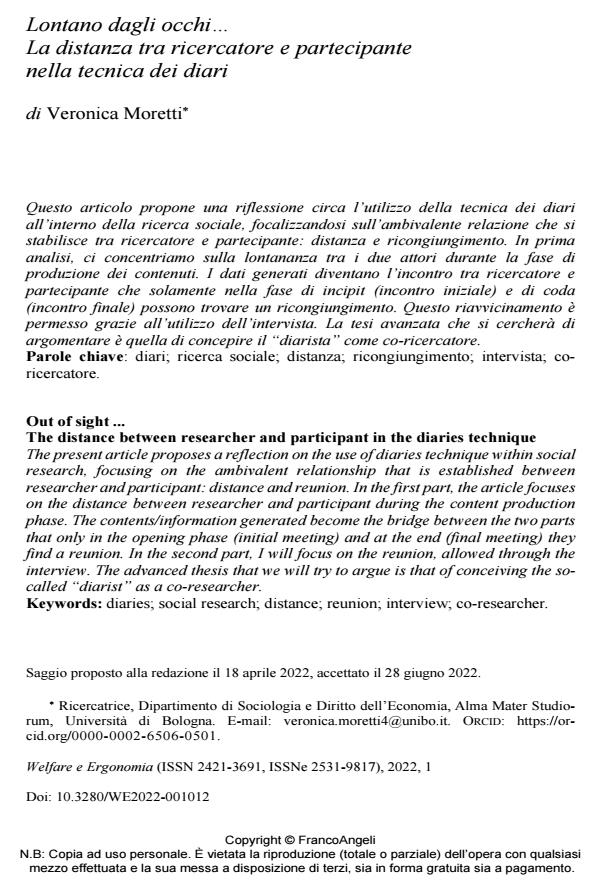Out of sight.. The distance between researcher and participant in the diaries technique
Journal title WELFARE E ERGONOMIA
Author/s Veronica Moretti
Publishing Year 2022 Issue 2022/1
Language Italian Pages 11 P. 157-167 File size 388 KB
DOI 10.3280/WE2022-001012
DOI is like a bar code for intellectual property: to have more infomation
click here
Below, you can see the article first page
If you want to buy this article in PDF format, you can do it, following the instructions to buy download credits

FrancoAngeli is member of Publishers International Linking Association, Inc (PILA), a not-for-profit association which run the CrossRef service enabling links to and from online scholarly content.
The present article proposes a reflection on the use of diaries technique within social research, focusing on the ambivalent relationship that is established between researcher and participant: distance and reunion. In the first part, the article focuses on the distance between researcher and participant during the content production phase. The contents/information generated become the bridge between the two parts that only in the opening phase (initial meeting) and at the end (final meeting) they find a reunion. In the second part, I will focus on the reunion, allowed through the interview. The advanced thesis that we will try to argue is that of conceiving the so-called "diarist" as a co-researcher.
Keywords: diaries; social research; distance; reunion; interview; co-researcher.
Veronica Moretti, Lontano dagli occhi.. La distanza tra ricercatore e partecipante nella tecnica dei diari in "WELFARE E ERGONOMIA" 1/2022, pp 157-167, DOI: 10.3280/WE2022-001012